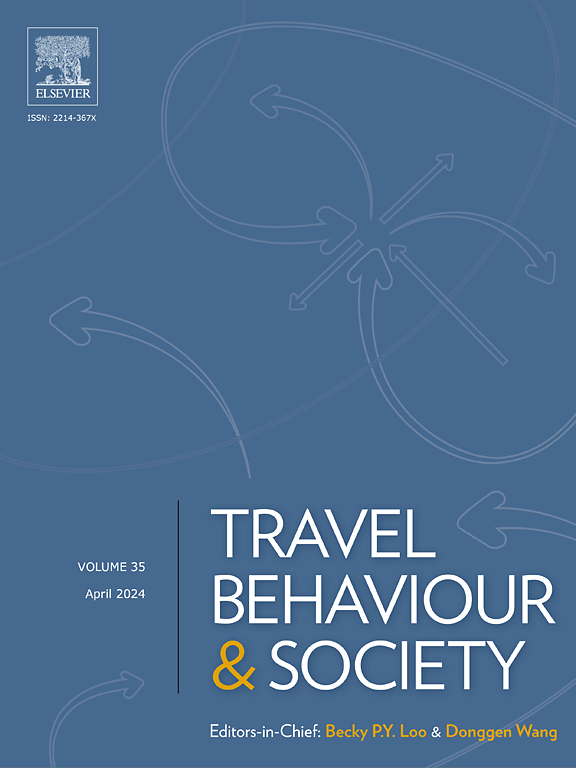Effects of airline itinerary attributes and air passenger characteristics on air itinerary choice: An exploratory analysis using revealed preference data
IF 5.1
2区 工程技术
Q1 TRANSPORTATION
引用次数: 0
Abstract
Indian civil aviation being a service-oriented industry demands prioritizing consumer interests. To accurately gauge consumer interests, it is crucial to consider the behavioural characteristics of passengers. This study provides a comprehensive overview of the passenger characteristics and itinerary attributes in the selection of itinerary among various itinerary types available in the Indian domestic aviation market. This study uses a revealed preference-based questionnaire survey to collect the socio-economic and itinerary specific attributes of passengers to study airline itinerary choice. The results from exploratory data analysis and multinomial logistic regression reveal that there is a significant influence of trip purpose (business, leisure and visiting friends and relatives), booking method, time of day, route category etc., on airline itinerary choice of passengers. We found that flyers residing in the South Zone opt mostly for direct and connected itineraries, North and East Zone flyers prefer nonstop itineraries and Central Zone flyers prefer more connected itineraries among the available itinerary types. In addition, the effects of route category indicated that flyers traveling on Category 1 and 2 routes (Appendix 1) are more likely to opt for nonstop and direct itineraries, while route Category 2A flyers prefer nonstop itineraries and flyers traveling on Category 3 routes are less likely to choose a nonstop itinerary. Positive effects of travel planning, seating comfort, baggage, time flexibility and airline itinerary choice are also noted. The insights provided by the study can be utilized by airlines and airport operators for efficient planning of the airline itineraries in the country.
航线属性和航空旅客特征对航线选择的影响:基于偏好数据的探索性分析
印度民航作为一个服务型行业,需要优先考虑消费者的利益。为了准确衡量消费者的兴趣,考虑乘客的行为特征是至关重要的。本研究全面概述了在印度国内航空市场的各种航线类型中选择航线时的旅客特征和航线属性。本研究采用基于偏好的问卷调查,收集旅客的社会经济属性和行程特定属性,研究航空公司的行程选择。探索性数据分析和多项logistic回归结果显示,出行目的(商务、休闲、探亲)、预订方式、时间、航线类别等因素对旅客的航线选择有显著影响。我们发现,在可选的行程类型中,居住在南区的旅客大多选择直航和联程行程,北区和东区旅客更喜欢直飞行程,中区旅客更喜欢联程行程。此外,航线类别的影响表明,第1类和第2类航线(附录1)的飞行者更倾向于选择直飞航线,而第2A类航线的飞行者更倾向于直飞航线,第3类航线的飞行者选择直飞航线的可能性较小。研究还指出了旅行计划、座位舒适度、行李、时间灵活性和航空公司行程选择的积极影响。该研究提供的见解可以被航空公司和机场运营商用于有效规划该国的航空公司行程。
本文章由计算机程序翻译,如有差异,请以英文原文为准。
求助全文
约1分钟内获得全文
求助全文
来源期刊

Travel Behaviour and Society
TRANSPORTATION-
CiteScore
9.80
自引率
7.70%
发文量
109
期刊介绍:
Travel Behaviour and Society is an interdisciplinary journal publishing high-quality original papers which report leading edge research in theories, methodologies and applications concerning transportation issues and challenges which involve the social and spatial dimensions. In particular, it provides a discussion forum for major research in travel behaviour, transportation infrastructure, transportation and environmental issues, mobility and social sustainability, transportation geographic information systems (TGIS), transportation and quality of life, transportation data collection and analysis, etc.
 求助内容:
求助内容: 应助结果提醒方式:
应助结果提醒方式:


